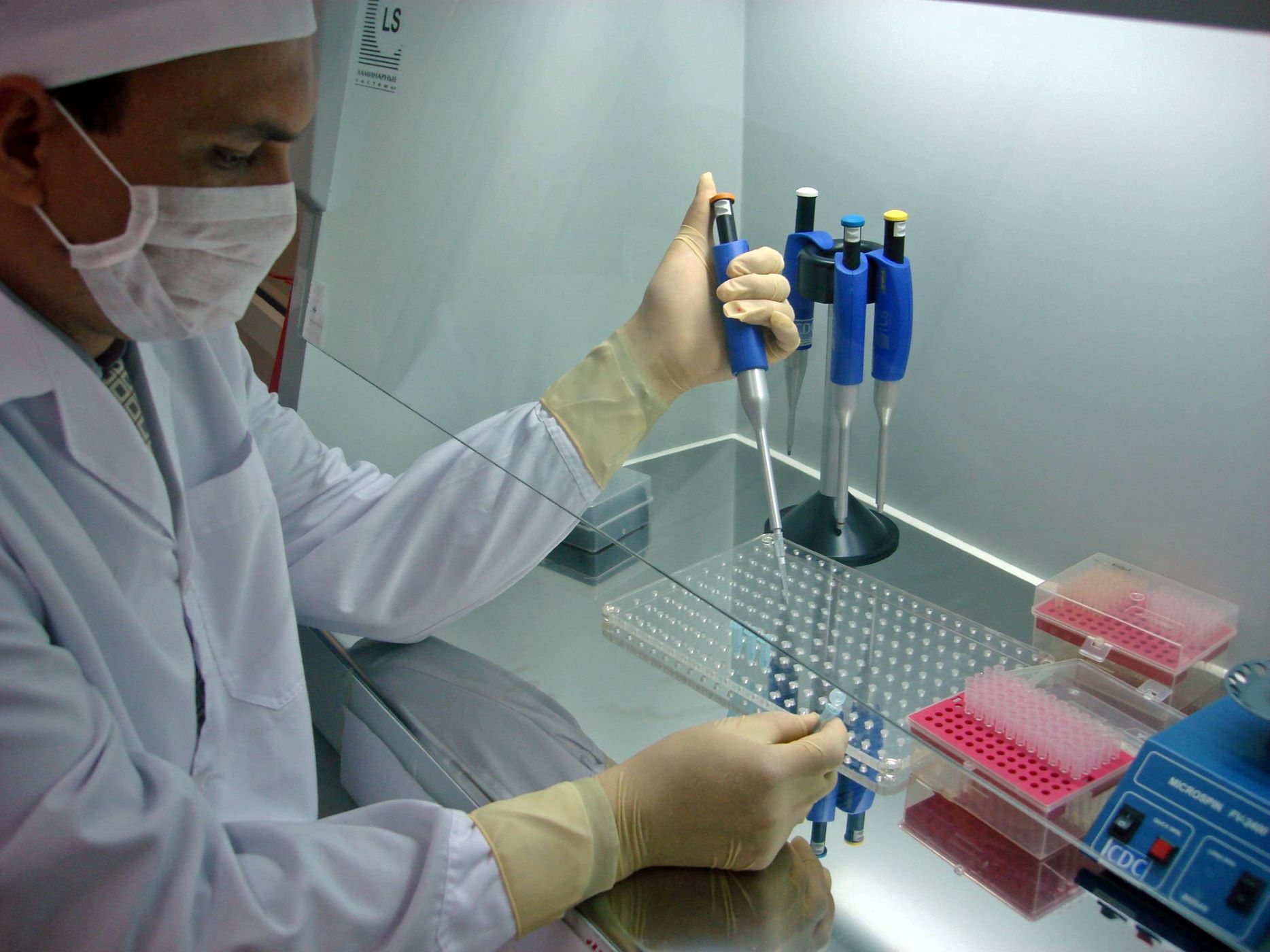Recommended
Background
The COVID-19 crisis has served as a painful demonstration that no country is fully prepared for a pandemic and that the existing global health architecture remains ill-equipped to finance pandemic prevention, preparedness, and response (PPR). The rationale for preventing and containing pandemics is self-evident: the price of preparedness is a fraction of the cost of responding to catastrophic outbreaks, both in terms of human and economic well-being.[1] In the aftermath of the 2003 SARS outbreak, 2009 H1N1 pandemic, and the 2014-2016 West Africa Ebola outbreak, experts called for scaling up sustainable financing to ensure the world was better prepared to face that next global health threat. But even amid efforts to better understand and measure preparedness gaps,[2] little action was taken to mobilize financing and incentivize investments in strengthening detection, prevention, and response capabilities.
As global health threats evolve, countries’ capacity to prepare for and respond to disease outbreaks is increasingly a global imperative. Now is the time to take concrete steps toward establishing sustained financing for pandemic PPR to help bring an end to the ongoing COVID-19 pandemic, combat future health security threats, and break the costly cycle of neglect.
The proposal: A fund for pandemic preparedness and response
Over the last decade, multilateral efforts to bolster global health security have succeeded in raising the profile of pandemic preparedness but have fallen short in one fundamental area: sustained financing. With limited resources, many low- and middle-income countries face a range of budget pressures and little incentive to invest in closing preparedness gaps. What’s needed is a source of dedicated, international financing to strengthen cross-sectoral, country-led health security, while supporting investments to rapidly develop and deploy medical countermeasures and to conduct surveillance.
In a report published in July 2021, the G20 High Level Independent Panel on Financing the Global Commons for Pandemic Preparedness and Response (HLIP) proposed a Global Health Threats Fund to address this pressing need.[3] Since then, key donors—including the United States—have rallied behind the idea, backing a new Financial Intermediary Fund (FIF)[4] at the World Bank. FIFs—a financial arrangement that can pool public and private resources—have often been used to drive progress toward global priorities. In this instance, a new FIF would be used to coordinate and channel funding to countries investing in preparedness according to standards agreed to at the World Health Organization, with the additional benefit of being housed at the World Bank with a direct line to its own and other public development banks’ lending and grant-making.
Experts and advocates have argued the new Fund should aim to mobilize $10 billion annually,[5] with G20 countries and other governments providing direct contributions. Donors should ensure these contributions be additional to avoid simply shifting Official Development Assistance (ODA) away from other critical development priorities and health spending. Employing innovative financing mechanisms—such as results-based payments or matching grants against preparedness progress and domestic investments—could help deliver value for money. The FIF can also pool and consolidate philanthropic contributions streamlining the deployment of coordinated financing without the need for an entirely new institution or the retrofit of an existing one that could threaten its core mission.
The COVID-19 pandemic has illustrated all too clearly that pandemic preparedness requires sustained funding. Establishing a financing mechanism to address this critical need is the logical next step in the fight to bring the current pandemic under control and ensure the world is better equipped to face the next health threat, and is an essential complement to response financing that can be mobilized by existing organizations.
How a FIF should operate
A new FIF will have a unique opportunity to support different models and financing approaches, working alongside countries as they strive to meet preparedness standards directly informed by the International Health Regulations (IHR) or successor standards agreed at the WHO. By providing funds and technical assistance, the FIF can incentivize countries to make on-budget investments in critical functions—such as health workforce training, establishing or reinforcing public health institutes and labs, developing and expanding animal health programs—with both near- and long-term benefits. Alternatively, funds can be designed to disburse on the basis of verified improvements on agreed upon health security metrics. Funds can also be set aside to subsidize high-externality investments—those with particularly large benefits to neighboring countries and the world. For instance, subsidy payments might be allocated for investments in data and sample gathering and sharing, or expanding genomic sequencing, or developing capacity to manufacture medical countermeasures. To drive results, financing should be allocated across the system to different types of recipients, including country governments, regional cooperation groups, private sector developers and manufacturers of medical countermeasures, global multilateral entities, and other networks.
Why the World Bank?
Different organizations across the global health and international financial institution architecture hold distinct comparative advantages in mobilizing and deploying monies and need to be fully financed to do what they are best suited to do. However, no institution—that is adequately funded, credible, and capable—is currently mandated to or accountable for ensuring pandemic preparedness, and a dedicated financing mechanism is needed.
The World Bank is engaged in a range of FIFs in support of global public goods, fulfilling roles ranging from implementer to secretariat to donor. For all FIFs, the Bank provides agreed upon financial services, including receiving, holding, and investing contributed funds, to drive progress towards international initiatives.
The G20 HLIP outlined several attractive advantages to a FIF at the World Bank. Specifically, the Panel noted that the FIF financing would complement the Bank’s existing lending and benefit from the institution’s track record of leveraging donor contributions to provide both concessional and non-concessional financing, as well as its established country relationships and experience in health systems strengthening and in areas such as disaster preparedness and crisis response. The Bank is also well placed to provide multisectoral support for its projects and programs and has a pre-existing collaborative relationship with the WHO and other global health institutions and multilateral bodies, including the G20 and G7.
Operationalizing the FIF
As immediate next steps, and to bolster political will for the pandemic prevention, preparedness and response FIF, the World Bank and WHO, in collaboration with the G20 and G7 should agree to:
-
Trigger the administrative process for creating a FIF at the World Bank, so that already and soon-to-be committed funds have somewhere to go.
-
Delineate the role of the World Bank in managing the FIF. The World Bank and WHO, in collaboration with country stakeholders and potential funders, must clearly define their roles in the operation and execution of the FIF, and establish lines of accountability.
-
Mobilize country support and funding commitments. The FIF will require an estimated US$10 billion per year (additional to existing spend) to fill preparedness gaps. In addition to financing, the success of the FIF would be bolstered by domestic financing for health systems.
-
Determine specific investment priorities within pandemic prevention, preparedness and response. The FIF must fill preparedness gaps according to country and regional priority allocation criteria and processes, which need to be clarified.
-
Advance complementary global health reforms. The creation of a FIF is critical but should not be the only change to the global system. Additional reforms should be marketed, advocated, and negotiated together, alongside the establishment of a FIF, as a package of reforms and financing. Assuring that at-the-ready response financing for early development and equitable launch of medical countermeasures can be accomplished under existing institutional mandates at the World Bank, for example, but requires the development of operational guidance. Ensuring robust replenishments of the Global Fund to Fight AIDS, Tuberculosis and Malaria, the Coalition for Epidemic Preparedness Innovations, and Gavi, the Vaccine Alliance, and pursuing incremental increases in assessed contributions to the WHO, while addressing any necessary reforms will also be important complements to this effort.
[1] See more on the landscape of financing global disease threats: https://www.cgdev.org/blog/financing-global-health-security-and-pandemic-preparedness-taking-stock-whats-next
[2] Over the years, and especially after the West Africa Ebola crisis in 2014-2016, the global community developed ways to define and assess national capacities to prevent, detect, and respond to infectious disease threats. WHO introduced a the voluntary Joint External Evaluation (JEE), wherein countries could measure their compliance with the WHO’s International Health Regulations (IHR). The Global Health Security Agenda (GHSA) was also launched in 2014 in response to growing global infectious disease threats. However, little has been done to close identified gaps in the absence of sustained, dedicated funding. See more:
https://apps.who.int/iris/bitstream/handle/10665/204368/9789241510172_eng.pdf;jsessionid=A972DB671C407DE21B0A58650B530A51?sequence=1 ; https://ghsagenda.org/about-the-ghsa/[3] See the HLIP’s full report and recommendations here: https://pandemic-financing.org/report/foreword/
[4] For more information on World Bank FIFs, see: https://fiftrustee.worldbank.org/en/about/unit/dfi/fiftrustee/overview
[5] In addition to the G20 HLIP, which proposed a Global Health Threats Fund that would mobilize $10 billion per year, the Independent Panel for Pandemic Preparedness and Response proposed an International Pandemic Preparedness and Response Financing Facility to mobilize $5-$10 billion per year for ongoing preparedness and response surge financing. See their proposal here: https://theindependentpanel.org/wp-content/uploads/2021/05/Background-Paper-14-Financing-Pandemic-Preparedness-and-Response.pdf
Rights & Permissions
You may use and disseminate CGD’s publications under these conditions.






